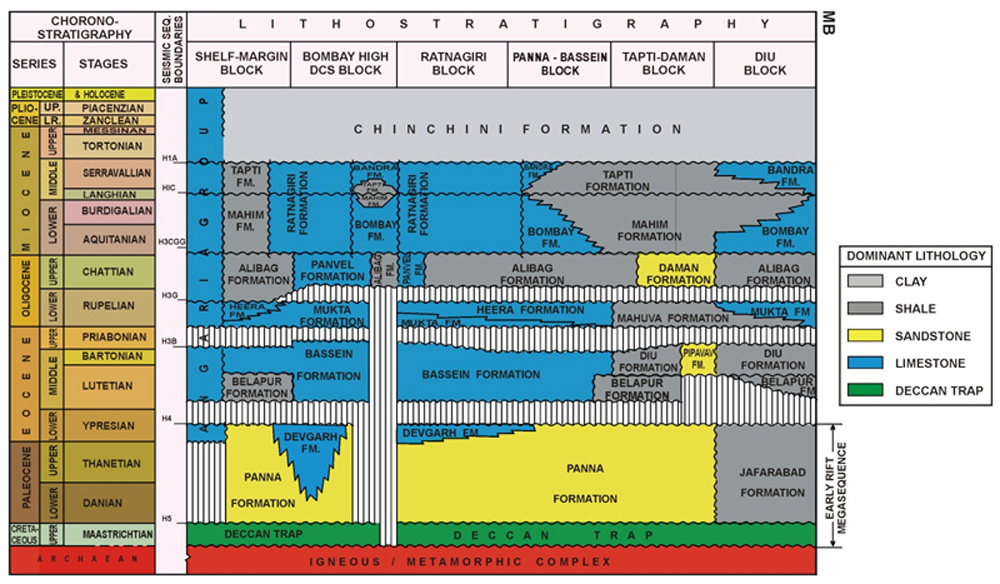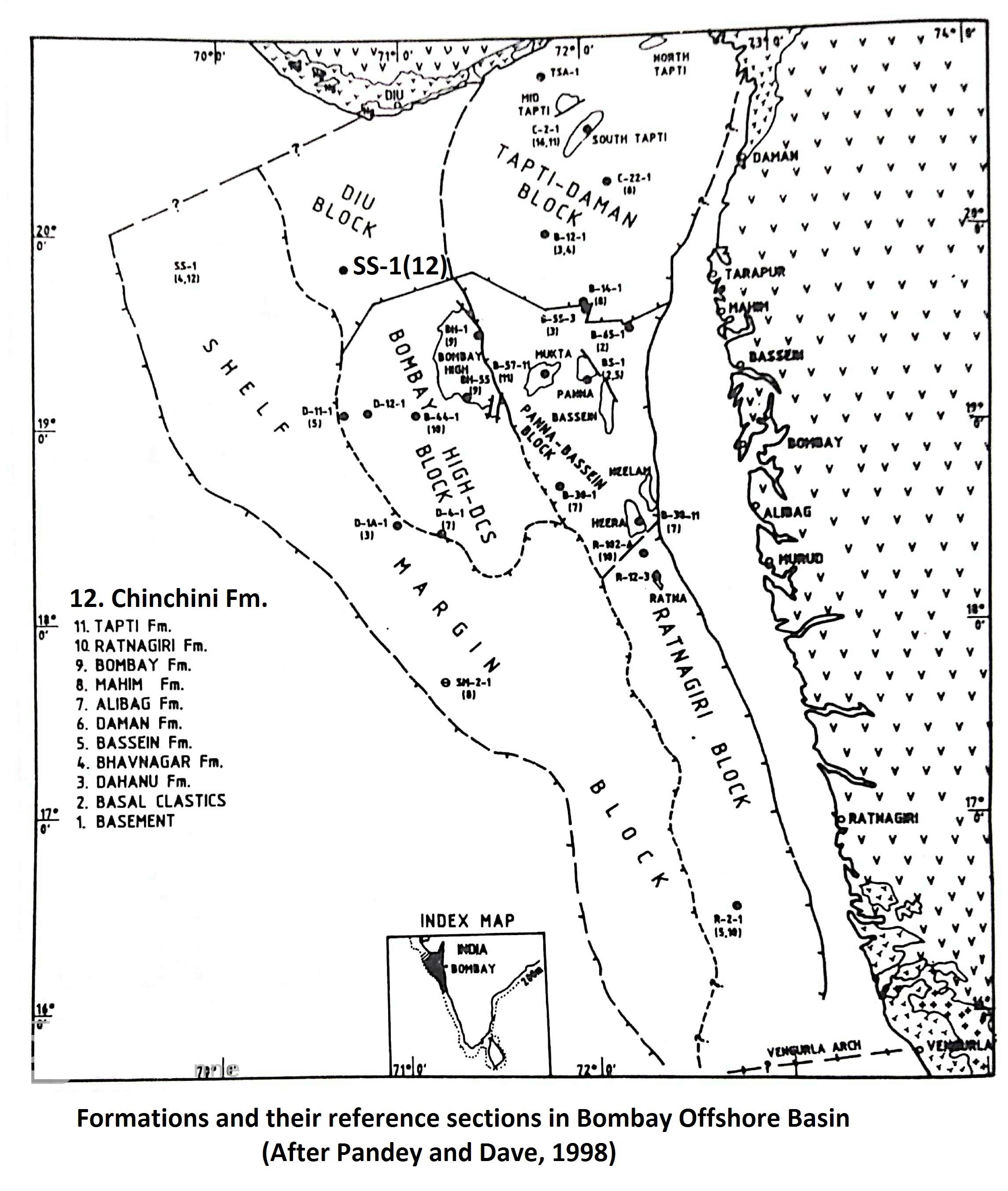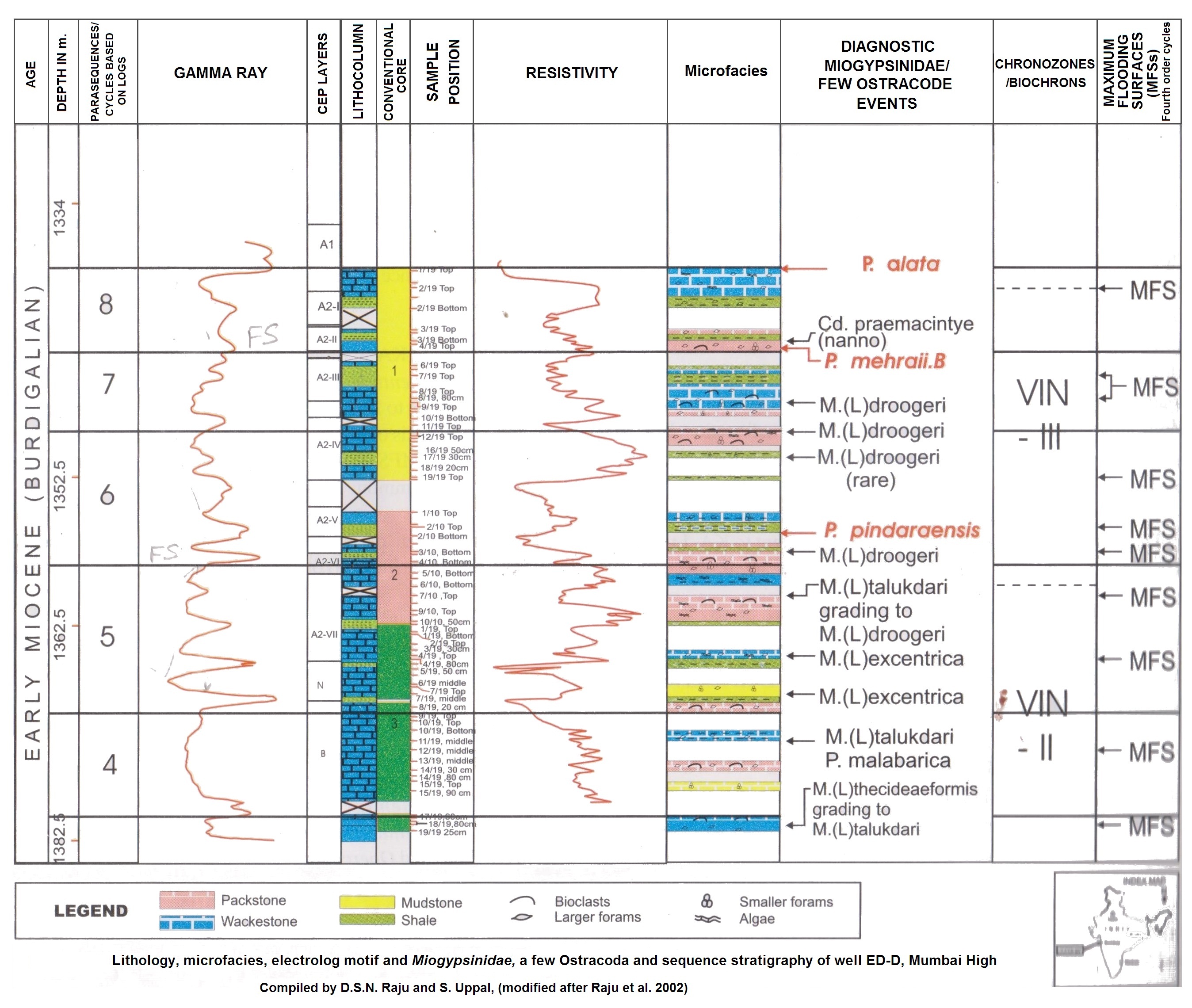Bombay Fm
Type Locality and Naming
Well BH – 1, (depth interval 1287 – 1665 m). [Original Publication: Basu, D.N., Banerjee, A and Tamhane, D.M. 1982. Facies distribution and petroleum geology of Bombay Offshore Basin, India. Journal Petroleum Geology, Volume 5, pp. 57-75.] Reference well: Well BH-55 (depth interval 1403 -1770 m); Well ED – D and 367m thickness in reference section
[Figure: Lithostratigraphy in Mumbai Offshore blocks (from NDRDGH.gov.in; after Jitendra Misra, 2009)]
Lithology and Thickness
Limestone. The formation consists dominantly of limestone interspersed with thin shale beds. The limestones are micrite and biomicrite type. In the type section, the formation is 378 m thick. Towards the southwest and south of Bombay High, it is gradually thicker at the exposure of overlying shale of the Mahim Fm until it finally merges with the limestone of the Bandra Fm. Represented by a thick pile of carbonates hosting huge quantity of oil and gas.
[Figure 1: Formations and their reference sections in Mumbai Offshore Basin (after Pandey and Dave, 1998)]
[Figure 2: Lithology, microfacies, electrolog motif and Miogypsinidae, a few Ostracoda and sequence stratigraphy of well ED-D, Mumbai High compiled by D.S.N Raju and S. Uppal, (modified after Raju et al., 2002)]
Relationships and Distribution
Lower contact
Unconformably overlies the Alibag Fm.
Upper contact
Regional extent
GeoJSON
Fossils
The limestone layers of Bombay Formation are very rich in larger foraminifera including Miogypsinidae. The succession of a Miogypsinoides from base to top include Miogypsina (Miogypsina) gunteri, M (M.) tani, M. (Lepidosemicyclina) thecideaeformis, M. (L) talukdari, M. (L) excentrica, M.(L) Bifida, M. (L) droogeri. There are several species of other larger foraminifera, smaller benthic, and ostracodes. Nearly six biochrons based on larger foraminifera are recognized within the Bombay Formation. The shale layers contain rare marginal marine forams.
Age
Depositional setting
Several cycles of sedimentation are recognized, nearly nine 4th / 5th order cycles rare recognized within lower to middle Burdigalian itself. The shales were deposited under marginal marine environments, while the limestones were deposited under shallow inner shelf with paleobathymetry up to 20/25 m.
Additional Information


